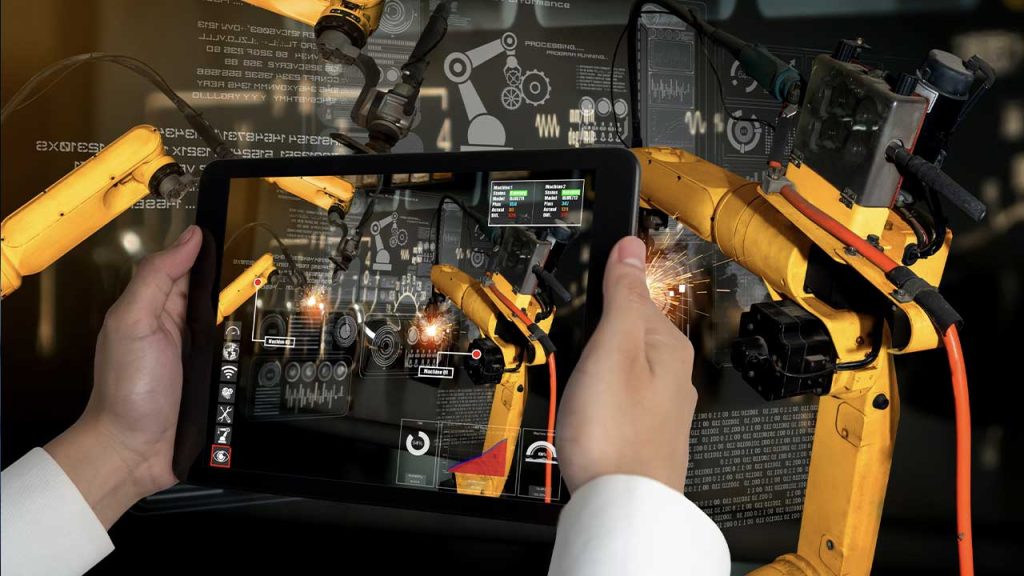From Historical Data to Real-Time Action: Unlocking Industrial Intelligence | SPONSORED
Learn how integrating a time series database with your historian helps industrial teams detect issues faster, act in real-time, and build predictive strategies that reduce downtime.
Modern industrial systems continuously generate time-stamped data from sensors, PLCs, SCADA systems, and other connected devices. Known as time series data, this information reflects how conditions change over time, tracking metrics such as temperature, vibration, speed, and pressure. When collected and monitored at high frequency, time series data enables operations teams to detect anomalies faster, respond to shifts in production, and optimize performance in real-time.
For manufacturers, time series data unlocks powerful operational insights. It helps teams shift from reactive fixes to proactive strategies by identifying issues early, optimizing equipment performance, and reducing downtime. But the data alone isn’t enough. Unless teams can process and act on it in real-time, opportunities are lost. Real-time insights allow businesses to prevent failures instead of reacting to them, avoid unnecessary maintenance costs, and maintain smooth, uninterrupted production.
What a historian does and where it falls short
To manage the constant stream of time-stamped industrial data, many manufacturers rely on data historians. These systems serve as long-term memory banks, storing historical records that help teams trace events, investigate failures, and support audits.
While historians provide reliable storage, time series data is most useful to teams that can act on it. Real-time insight requires real-time processing. Without it, manufacturers face blind spots that delay decisions, trap data in silos, and prevent early intervention. Even the most complete dataset loses value if teams can’t use it to spot issues before they escalate.
Siloed Data, Incomplete Insights
Industrial environments rely on many connected systems, each generating valuable data. Historians store this data in isolation, limiting cross-system visibility. Pharmaceutical manufacturing facilities often house vibration data from tablet compression machines and quality control results from downstream inspection systems in separate platforms. Without integration, teams can’t easily correlate equipment wear with product defects. This disconnect slows down root cause analysis and leads to wasted materials, rework, and missed opportunities for improvement. By the time defects show up in quality metrics, earlier signals that could have flagged the issue remain trapped in siloed systems, costing businesses time, money, and operational efficiency.
Delayed Visibility
Most historians retrieve data through scheduled queries and batch exports. These processes were designed for long-term storage and periodic reporting. However, they introduce delays between when data is collected and when it becomes available for analysis. In a food processing plant, sensors track temperature and humidity to ensure product safety and equipment performance. While the data is recorded, the historian only logs it at intervals suitable for periodic reports, rather than issuing immediate alerts. If a sudden spike in temperature occurs inside a drying oven, the anomaly may be captured but not flagged in time to prevent spoilage or equipment damage. The lag leads to higher energy costs, unnecessary waste, and lost production time—all of which can be avoided with real-time visibility.
No Predictive Capability
Data historians capture and store past events using time-stamped records. This long-term view supports compliance and post-event analysis, helping teams investigate what happened. However, historians lack the speed and intelligence to act on early warning signs. That gap puts overall equipment effectiveness (OEE) at risk. When performance issues aren’t caught early, businesses face more downtime, rushed repairs, and missed delivery targets.
In an automotive manufacturing facility, a robotic arm may show early signs of servo motor wear. The historian logs the data, but without real-time processing or predictive analytics, those early warnings remain hidden. The team misses the opportunity to replace a low-cost component during routine maintenance. This oversight causes an unexpected production halt, increased labor costs, and shipment delays—undermining profitability and customer trust.
What is a time series database and why it matters
A time series database (TSDB) is built to collect, store, and analyze high-frequency, time-stamped data from industrial systems. It captures fast-moving data from PLCs, SCADA systems, and sensors as it occurs, giving teams a live window into operations. Unlike general-purpose databases, a TSDB processes time-based data with the speed and scale needed for real-time insights.
By adding a time series database to your data architecture, you unlock the ability to detect patterns as they emerge and respond to operational changes instantly. For industrial teams, this means faster decisions, fewer disruptions, and better outcomes—especially when paired with the long-term memory of a data historian. With both systems working together, you gain the context to understand what happened before and the visibility to act on what’s happening now.
Best Practices for Integrating a Time Series Database with Your Historian
Integrating a time series database (TSDB) with your historian creates a hybrid system that connects real-time monitoring with long-term analysis. This unified setup helps teams respond to current events while learning from past events.
Consider a beverage manufacturing facility that uses real-time temperature and flow rate data from a pasteurization line, paired with historical benchmarks stored in a historian. If values drift from the ideal range, the TSDB can trigger alerts or adjust machinery to avoid product spoilage.
This type of integration gives teams a live view of current operations while preserving valuable historical context. It improves decision-making, minimizes rework, and supports predictive strategies that reduce waste and extend asset life. Teams can apply different forecasting methods, such as ARIMA or exponential smoothing, tailored to equipment behavior and production goals. With trusted historical data and live sensor inputs, teams can develop more accurate predictive maintenance models, thereby reducing downtime while enhancing reliability and efficiency.
How InfluxDB 3 works with your data historian
InfluxDB 3 is a time series database designed to handle high-frequency, high-cardinality data from industrial sources. It ingests and processes data as it’s generated, delivering immediate operational visibility that traditional historians can’t provide on their own.
When combined with your historian, InfluxDB 3 creates a hybrid system that merges real-time responsiveness with historical depth. Teams can compare current performance against historical trends, identify patterns more quickly, and adjust operations proactively. For manufacturers, this means fewer unplanned outages, faster root cause analysis, and smarter maintenance decisions that protect uptime and improve efficiency.
InfluxDB 3 integrates directly with industrial systems using several flexible methods:
- Telegraf collects data from PLCs, SCADA systems, and sensors using industrial protocols, such as OPC UA, Modbus, and MQTT. It streams this data into InfluxDB 3 for immediate analysis, providing a live feed of operational data that helps teams act faster and reduce lag in decision-making.
- APIs allow seamless, two-way data exchange between InfluxDB 3 and your historian. This keeps both systems synchronized, allowing historical trends and real-time insights to be analyzed together and creating a more comprehensive picture of performance over time.
- Custom Plugins let teams tailor data pipelines to their specific infrastructure and operational requirements. This flexibility ensures that even complex or proprietary setups can benefit from InfluxDB 3 without requiring major rework.
- No-Code Tools such as Heisenware simplify deployment by enabling machine data acquisition and monitoring without the need for custom code. This speeds up implementation, lowers development costs, and allows teams to focus on insights rather than integration.
Together, these tools make it easier to build a hybrid system that enhances existing historians with real-time visibility and predictive capabilities.
The takeaway
Historians keep a valuable record of where you’ve been; time series databases show you where you’re going.
Together, they provide the visibility, speed, and foresight needed to optimize performance and reduce unplanned downtime. With InfluxDB 3 powering real-time insight and your historian preserving operational memory, you can monitor conditions, act quickly, and plan ahead with confidence.
Ready to get started? Contact InfluxData, browse the time series buying guide, or get started with a free download of InfluxDB 3.
Sponsored by InfluxData
Related articles:



